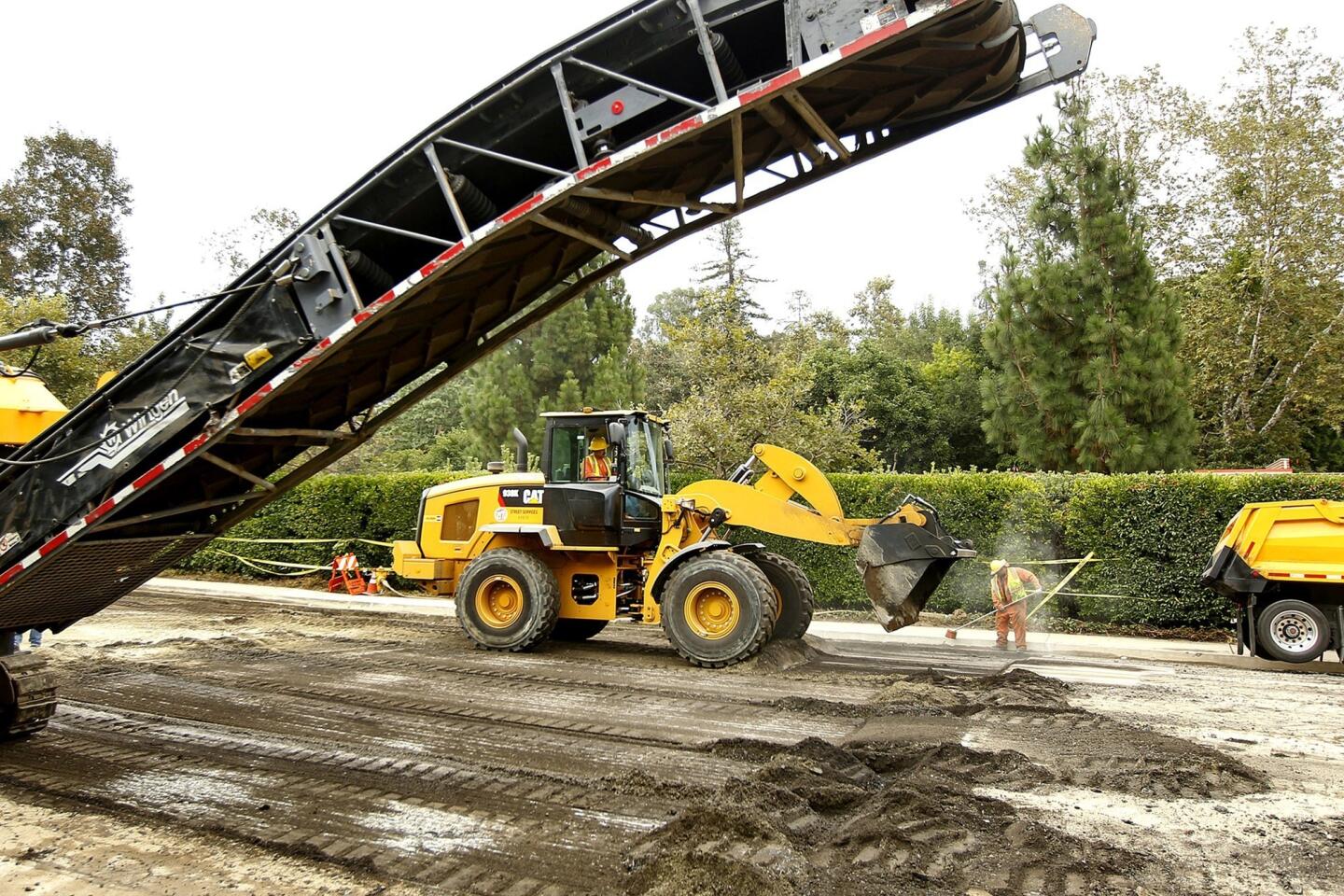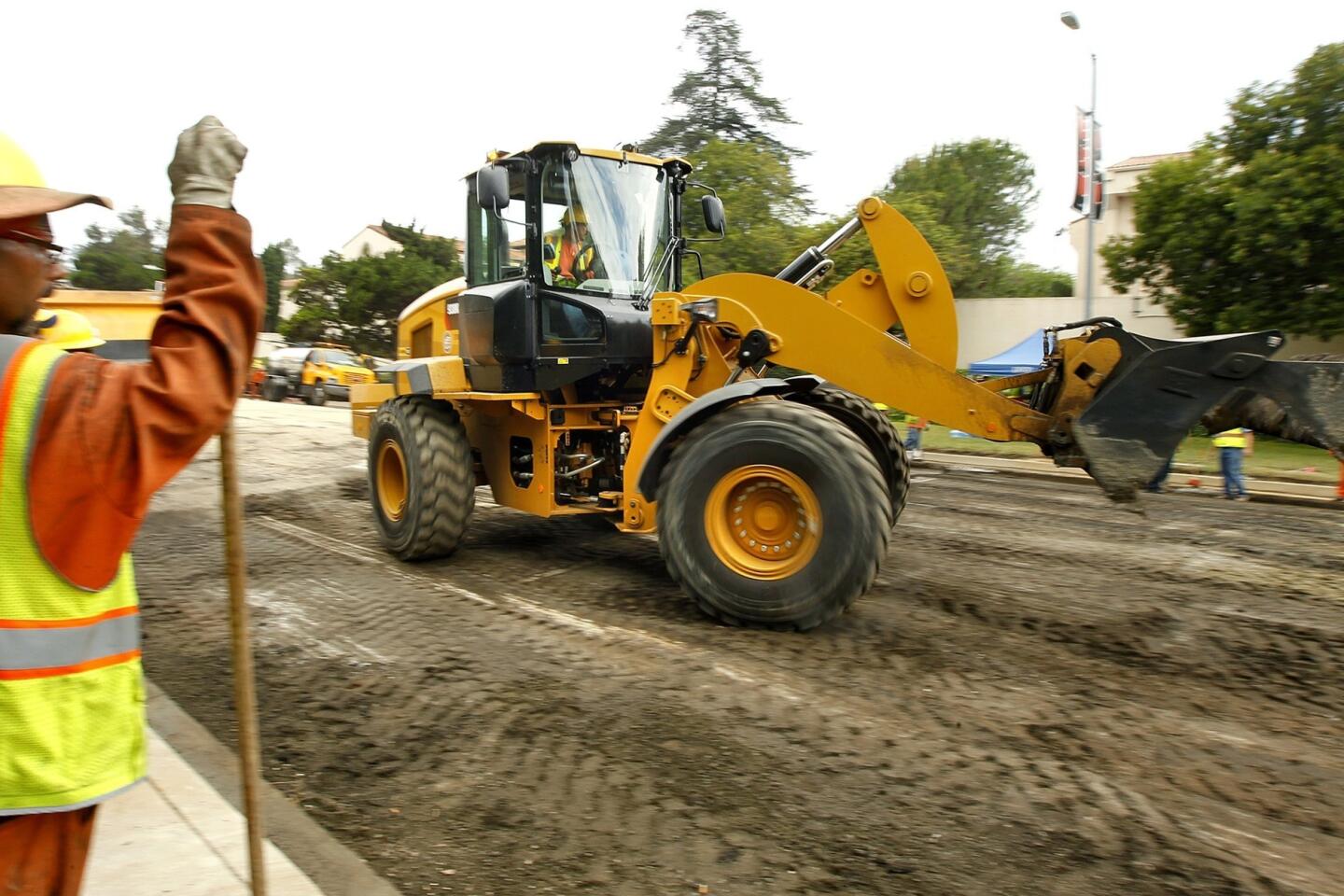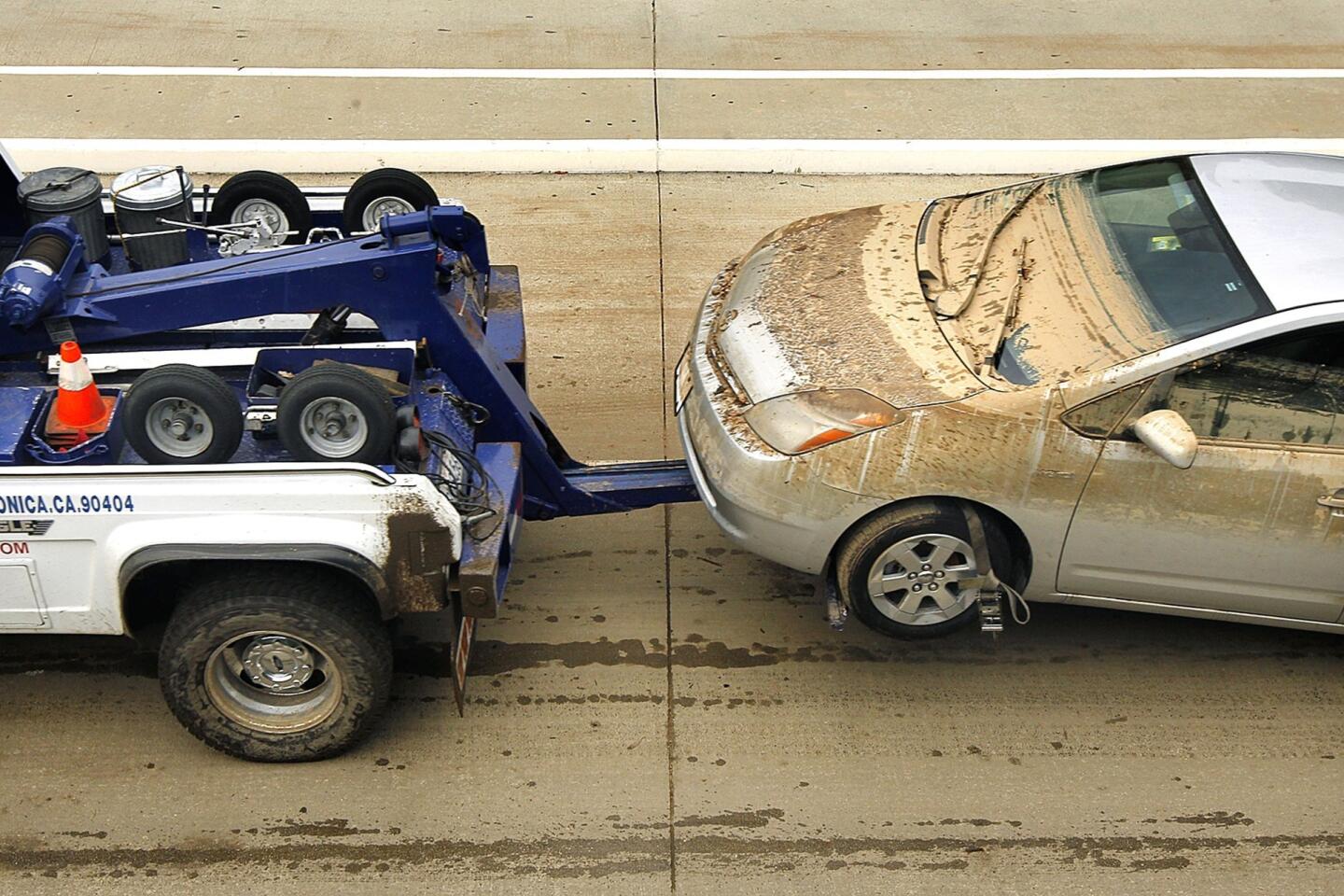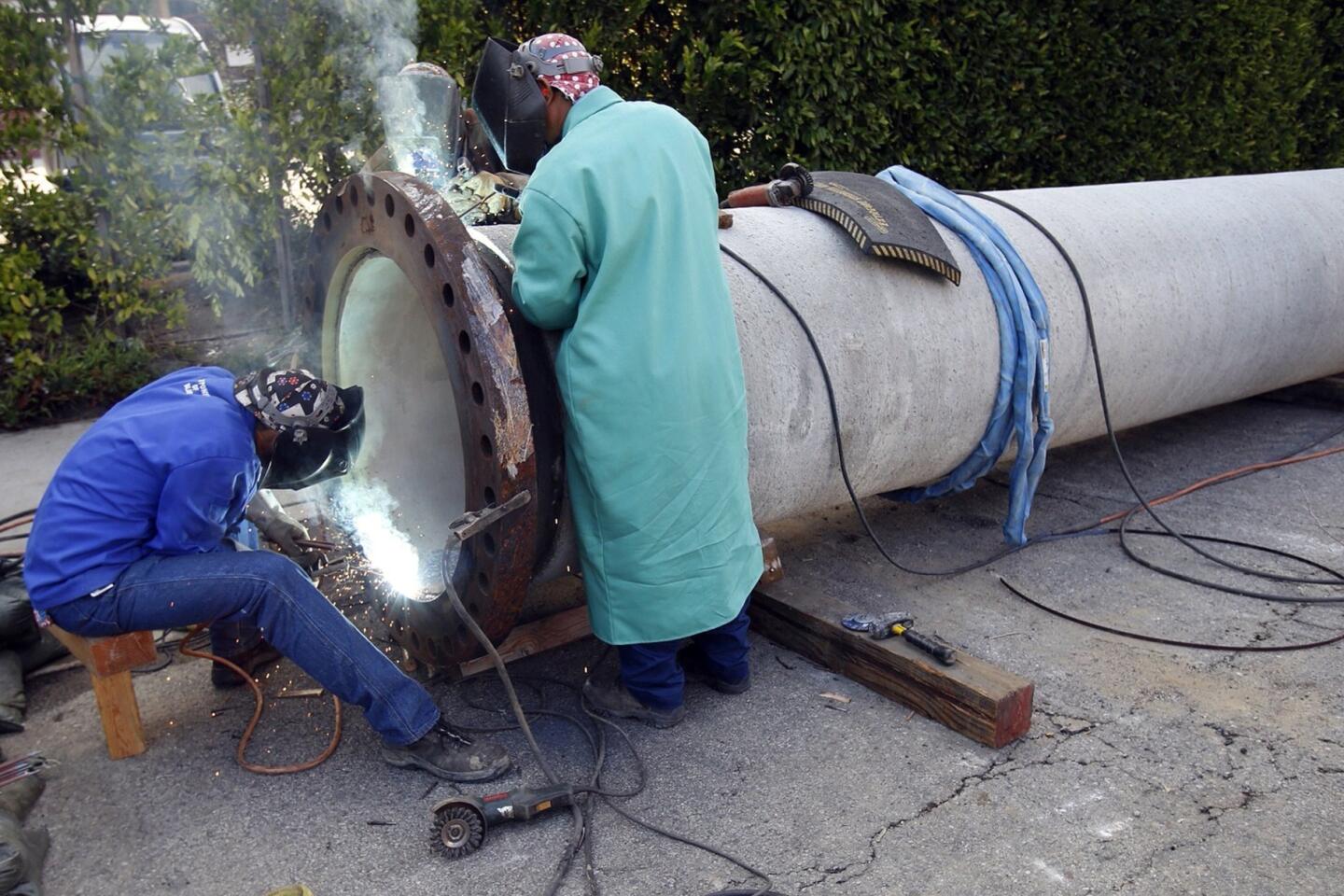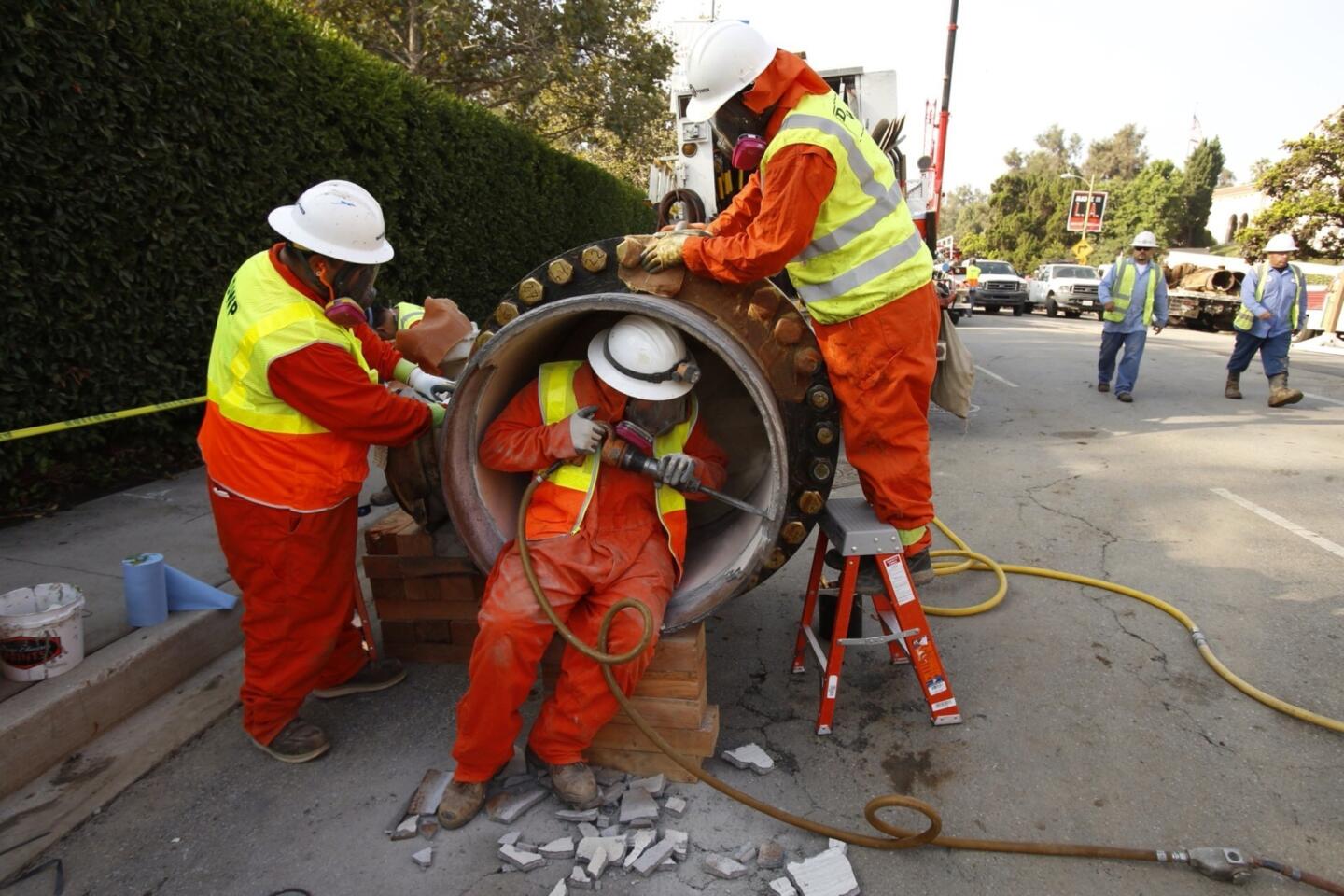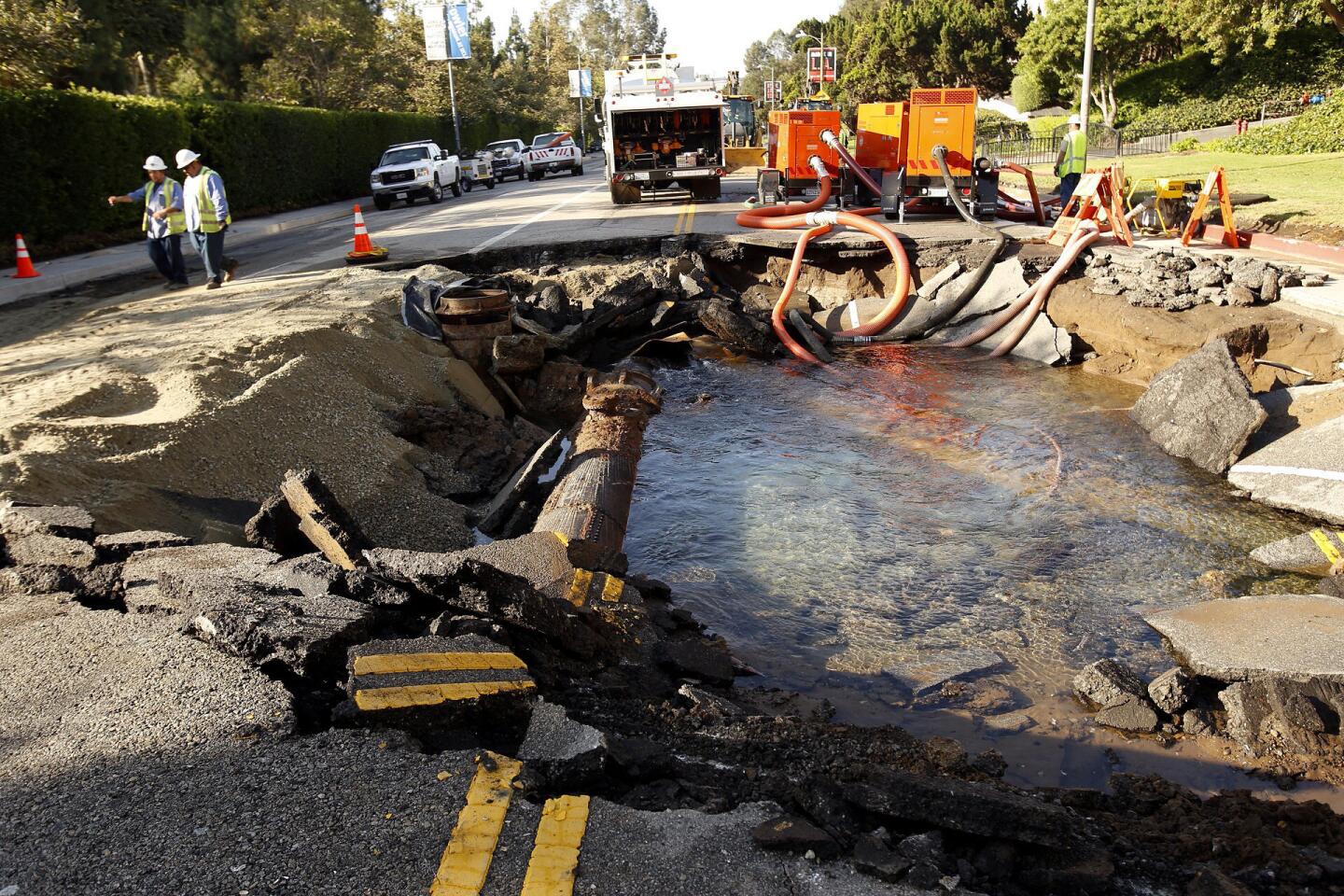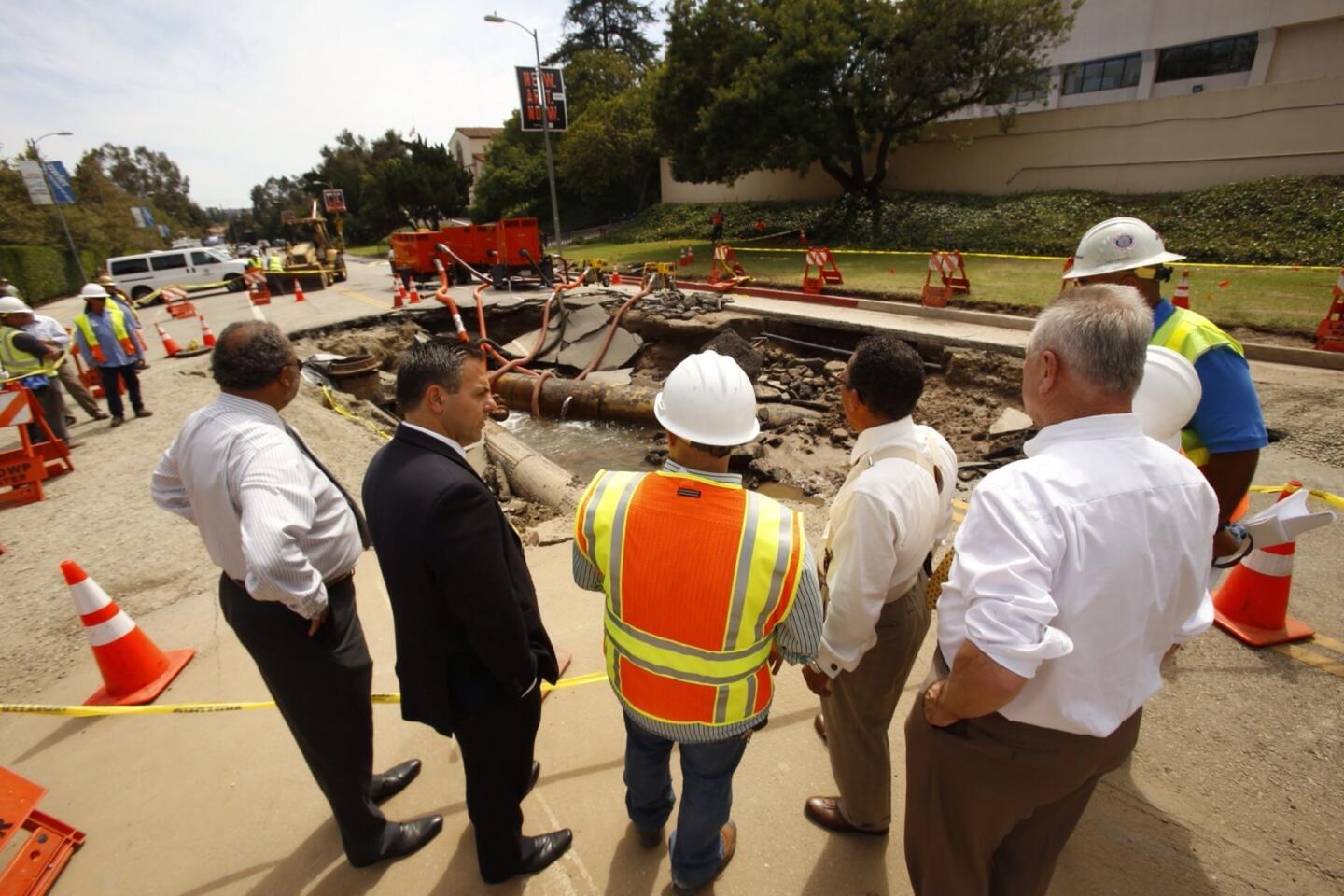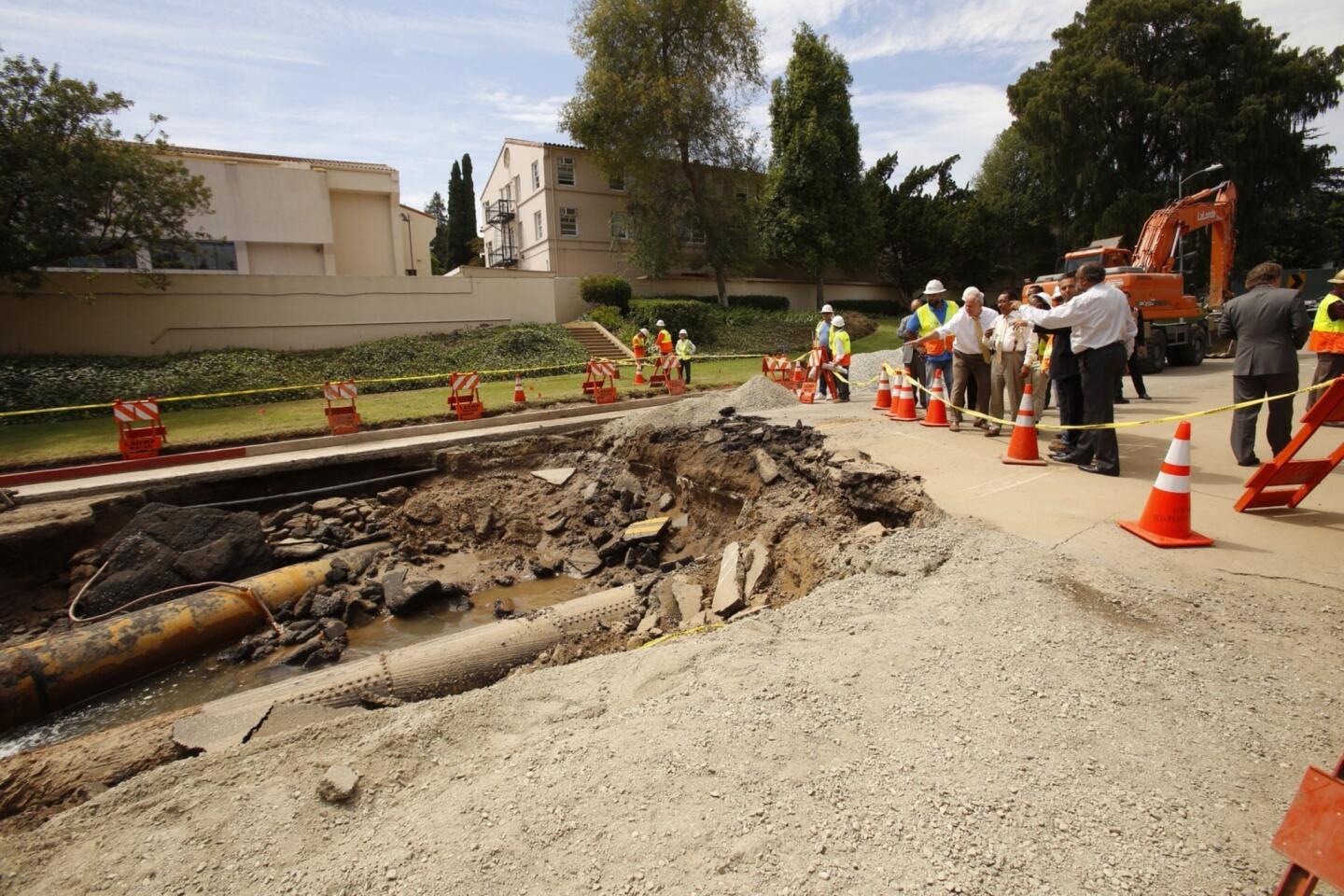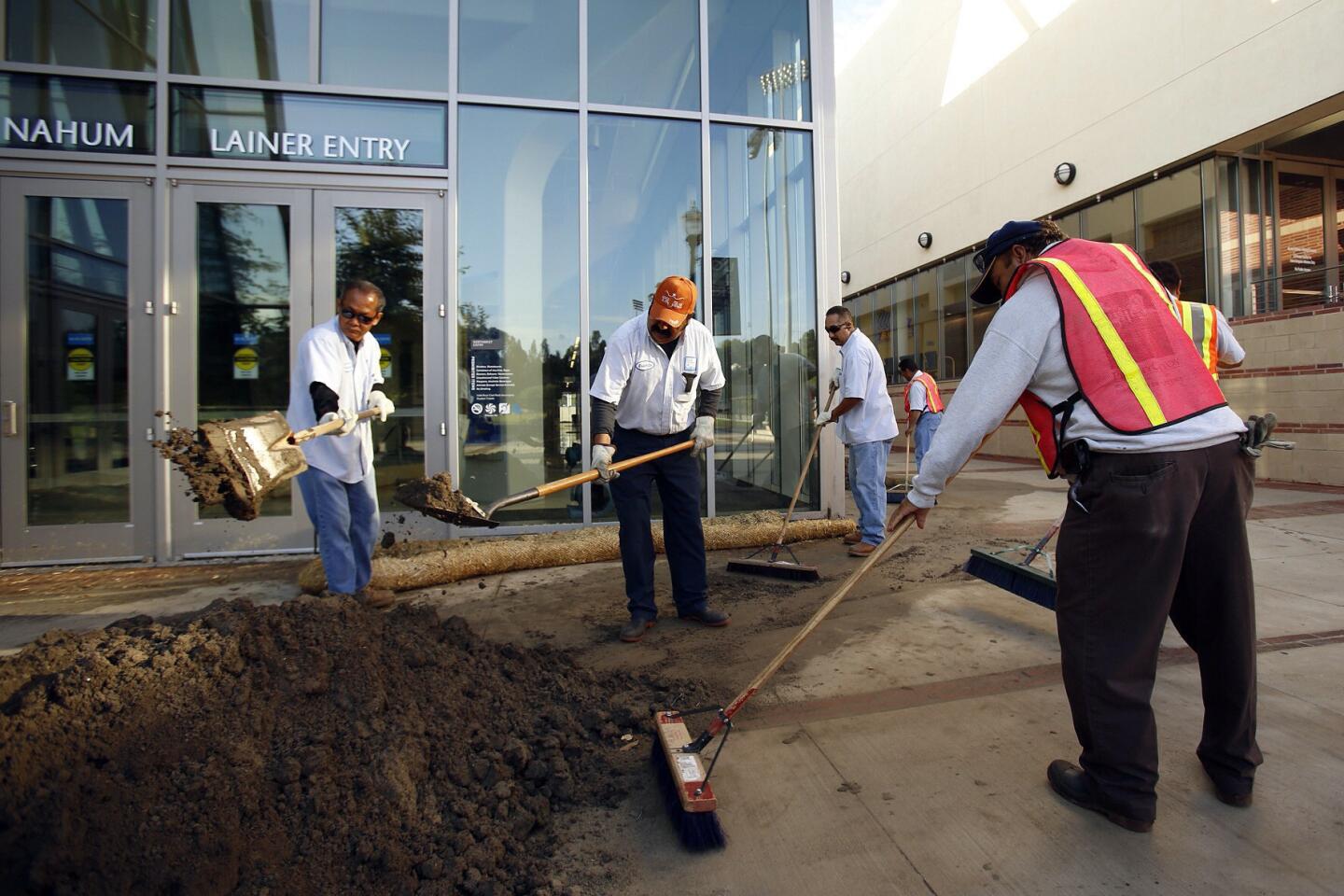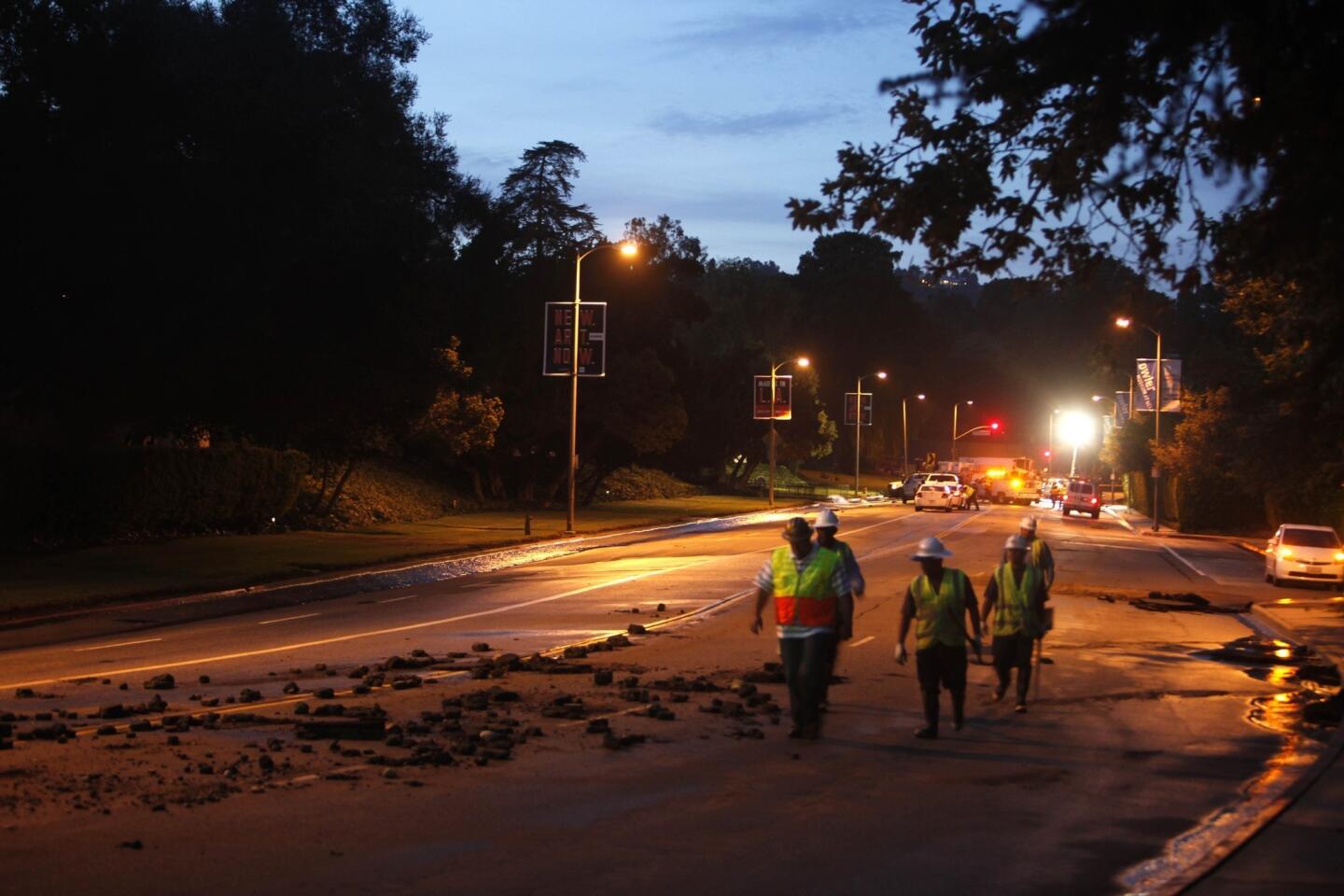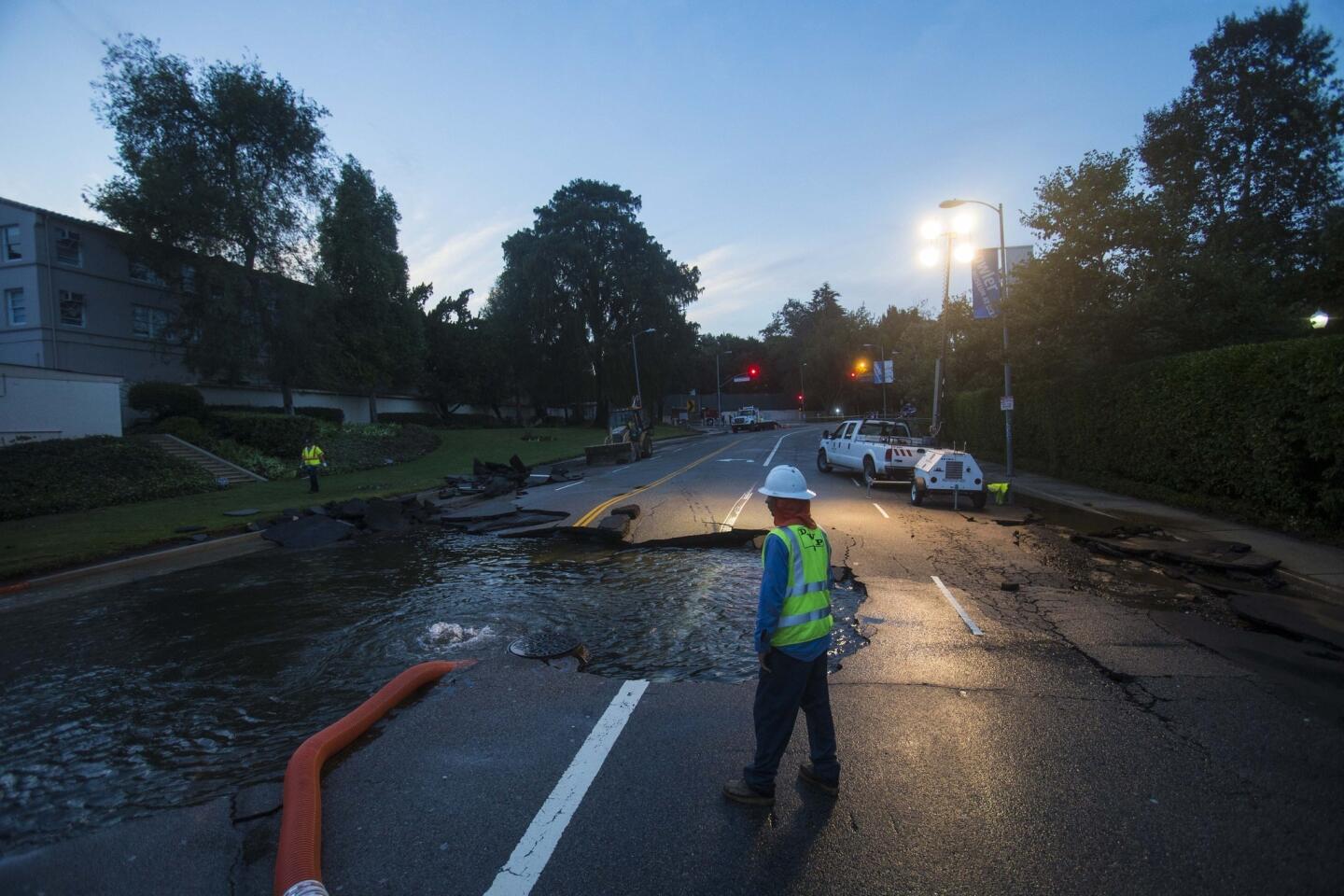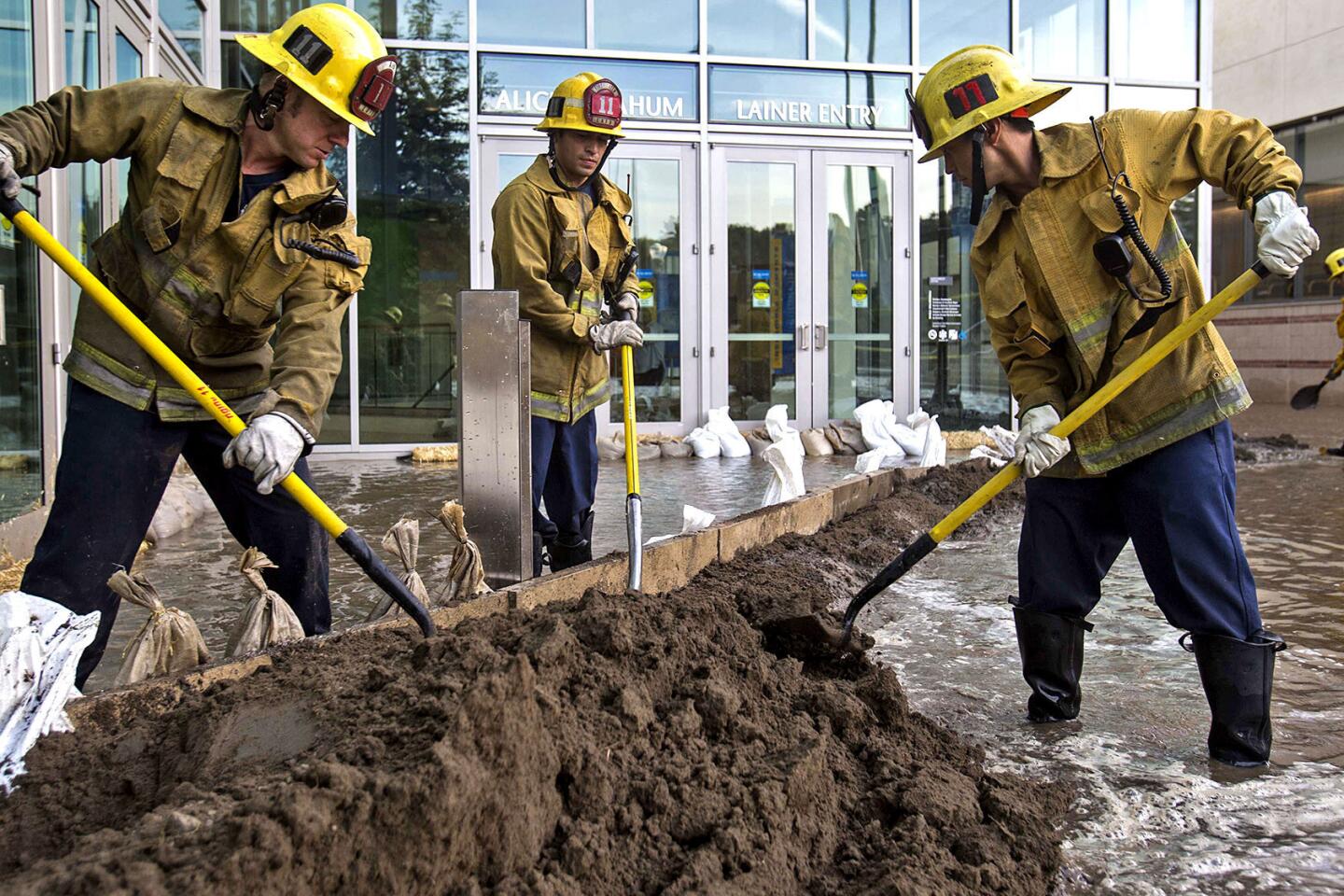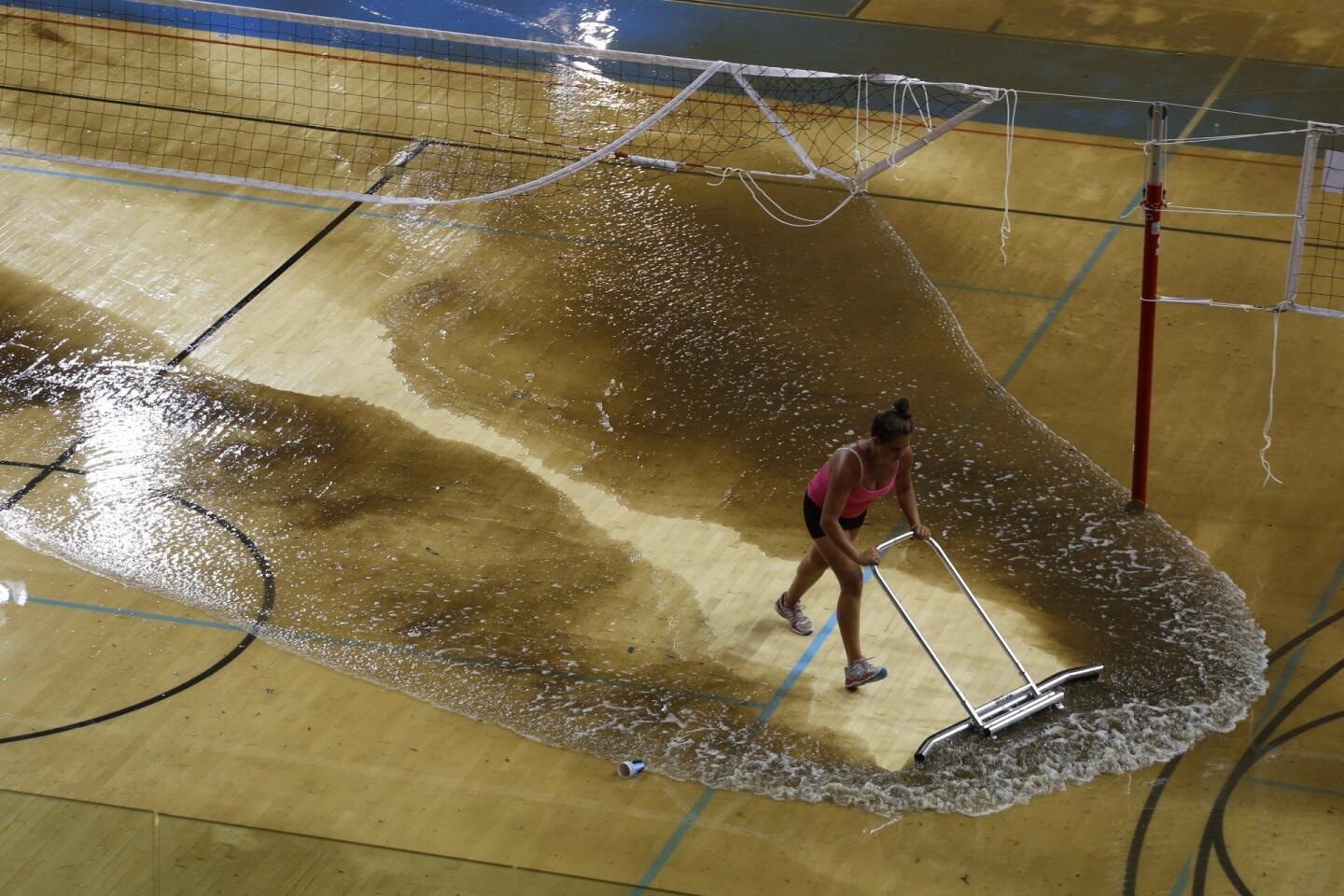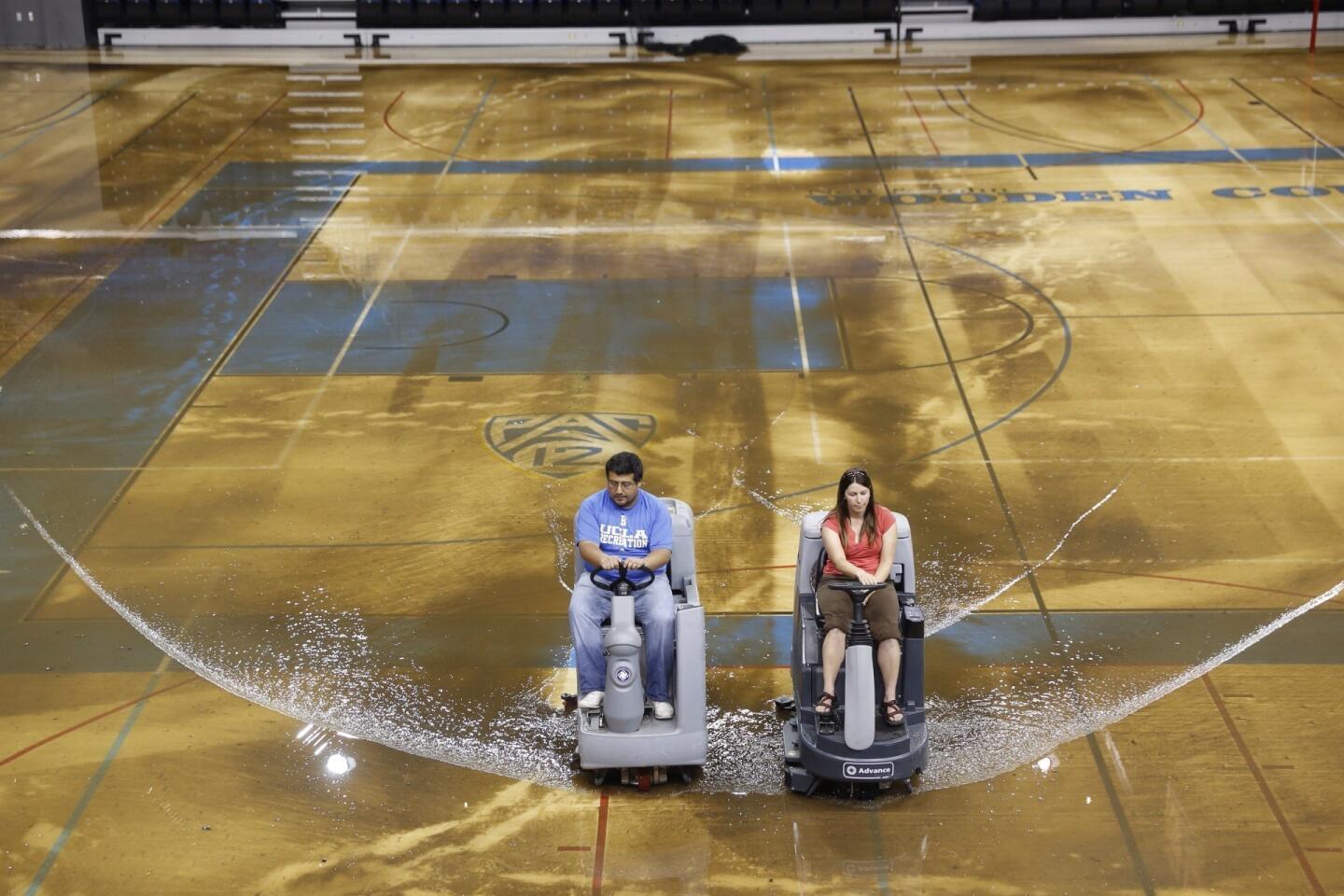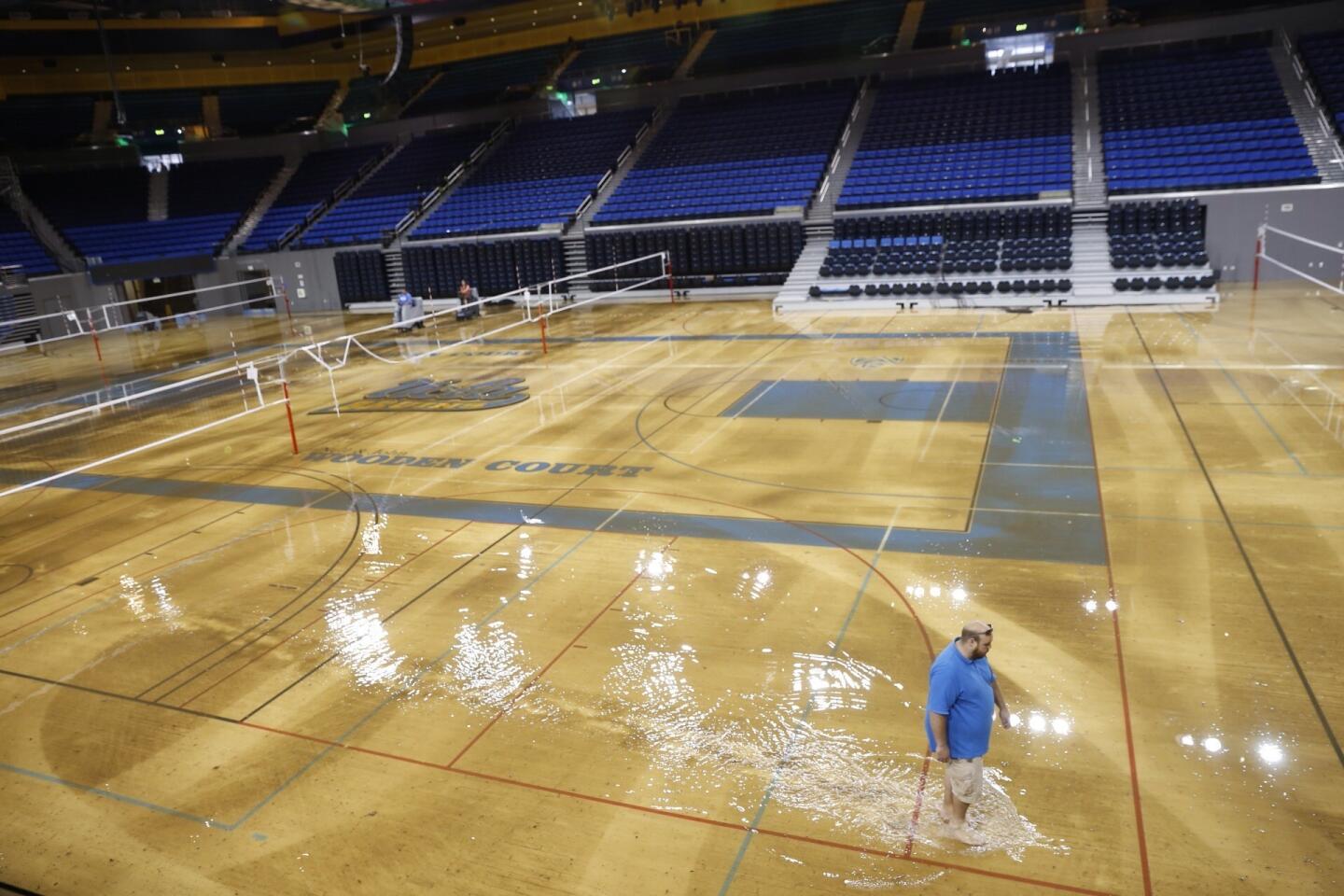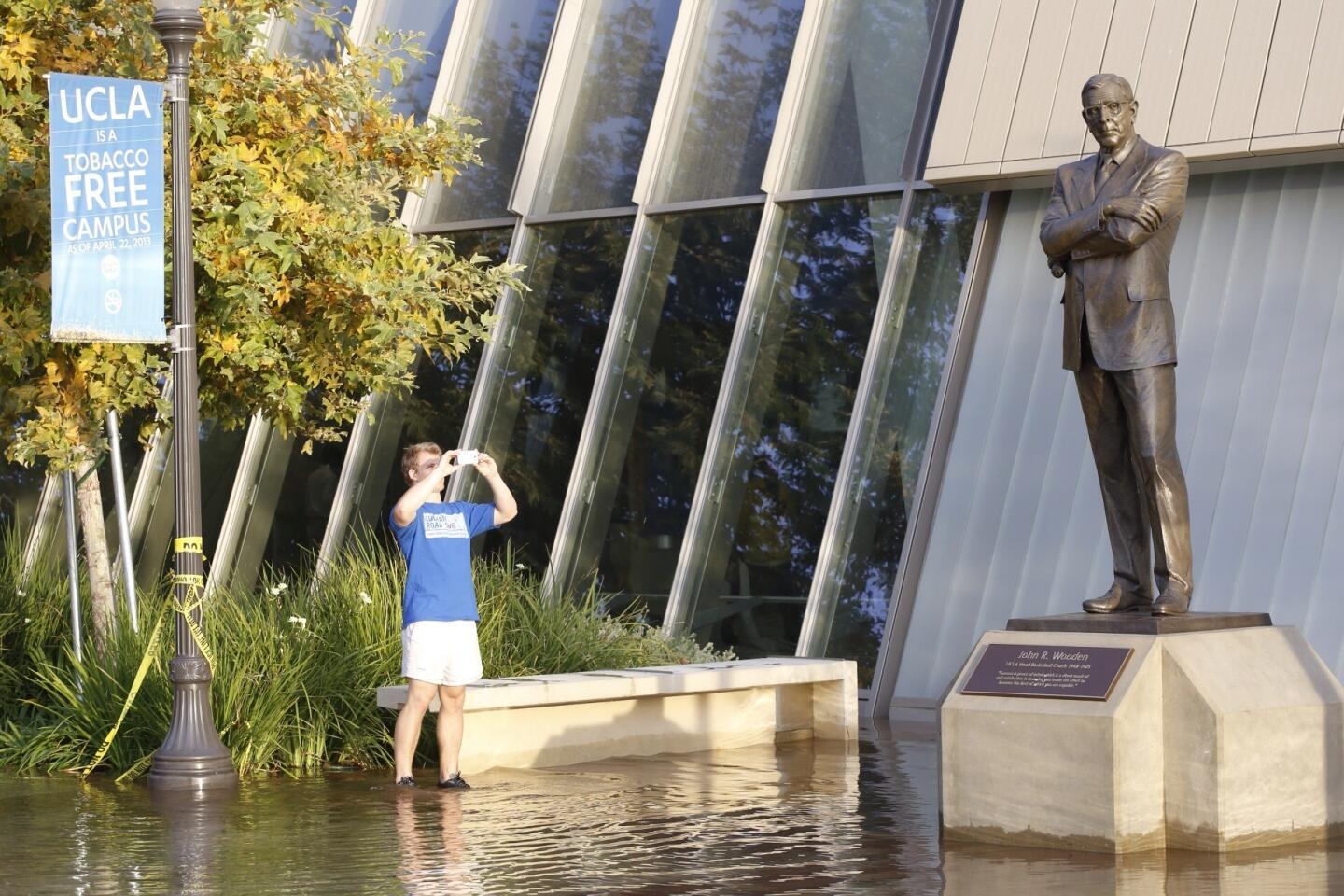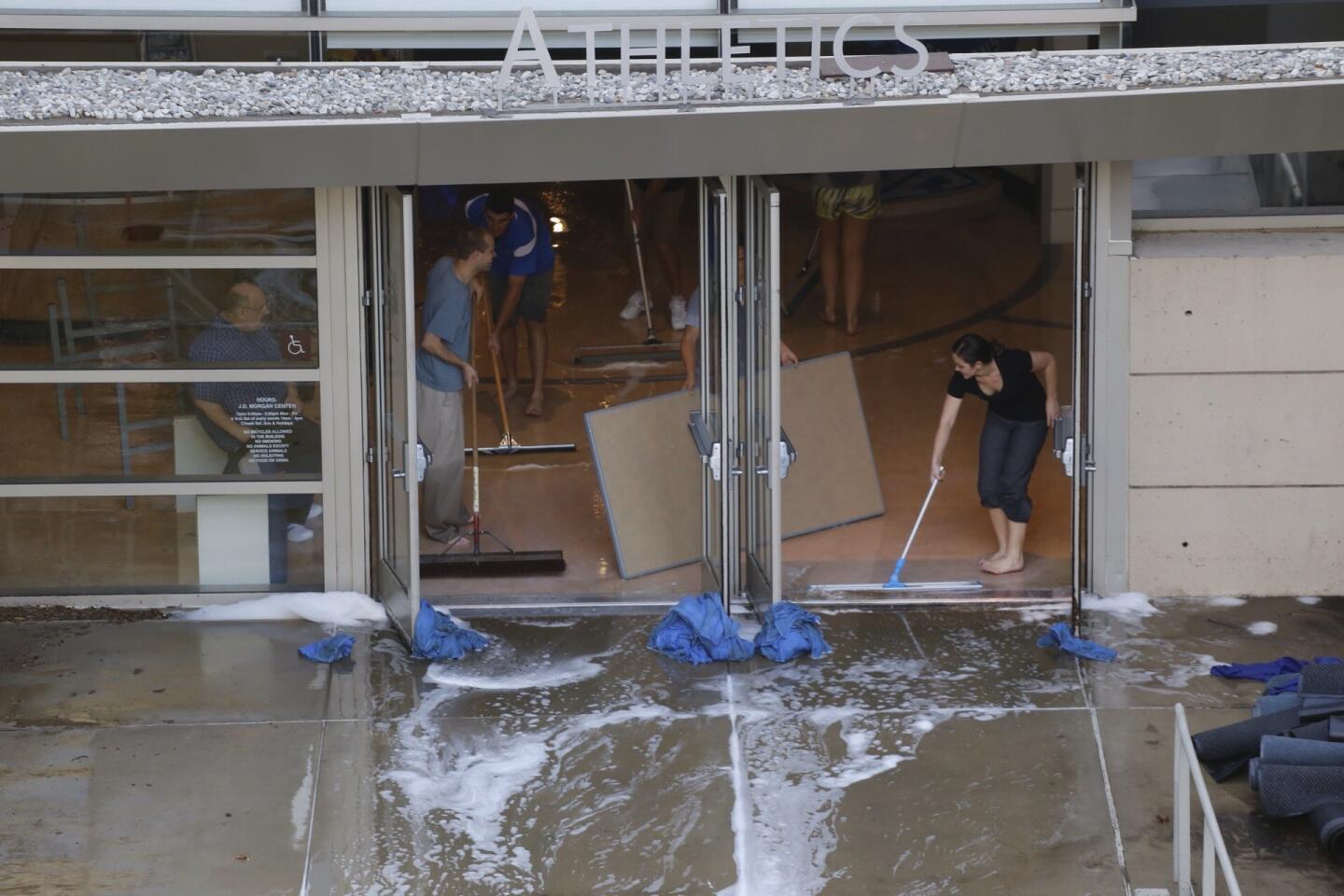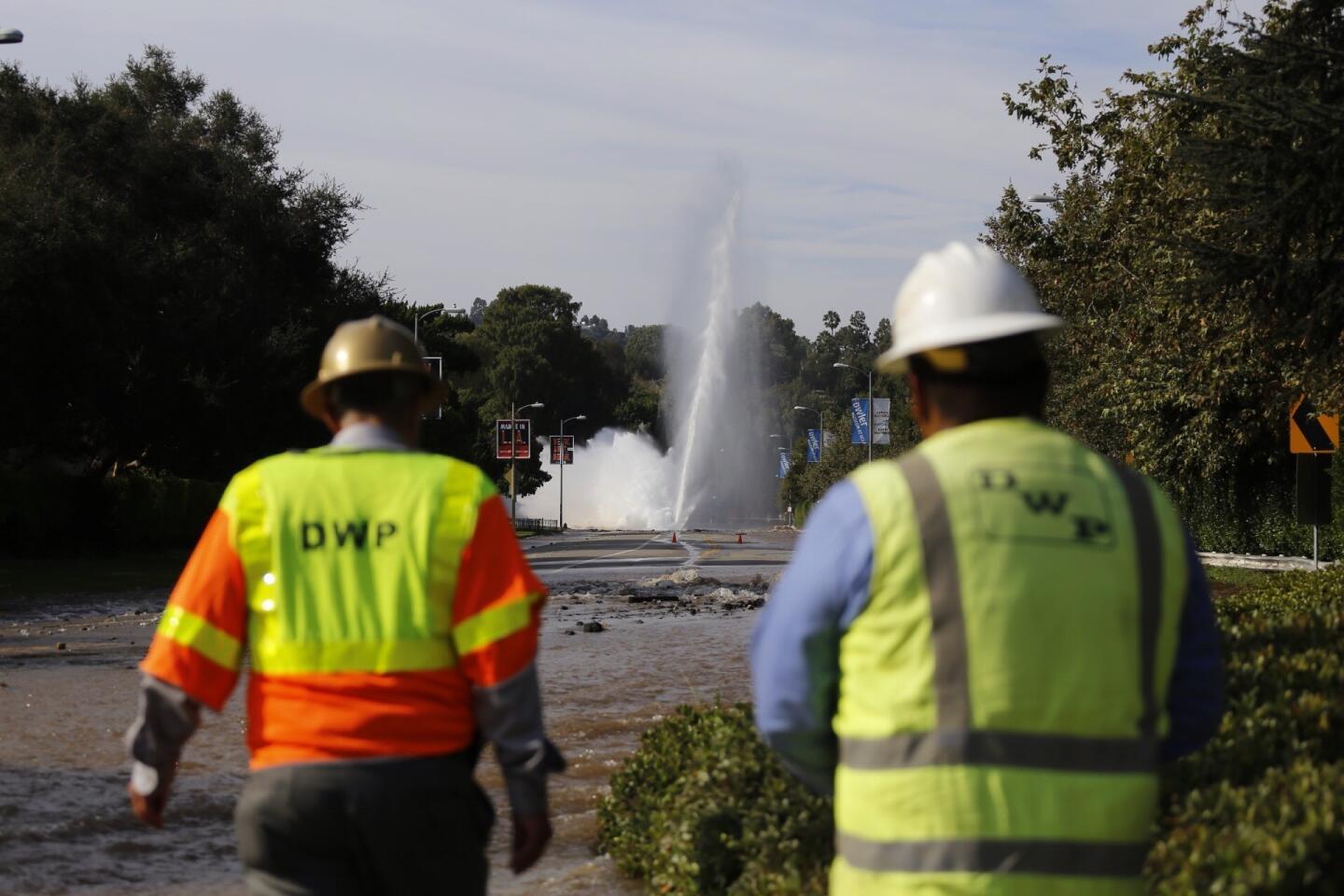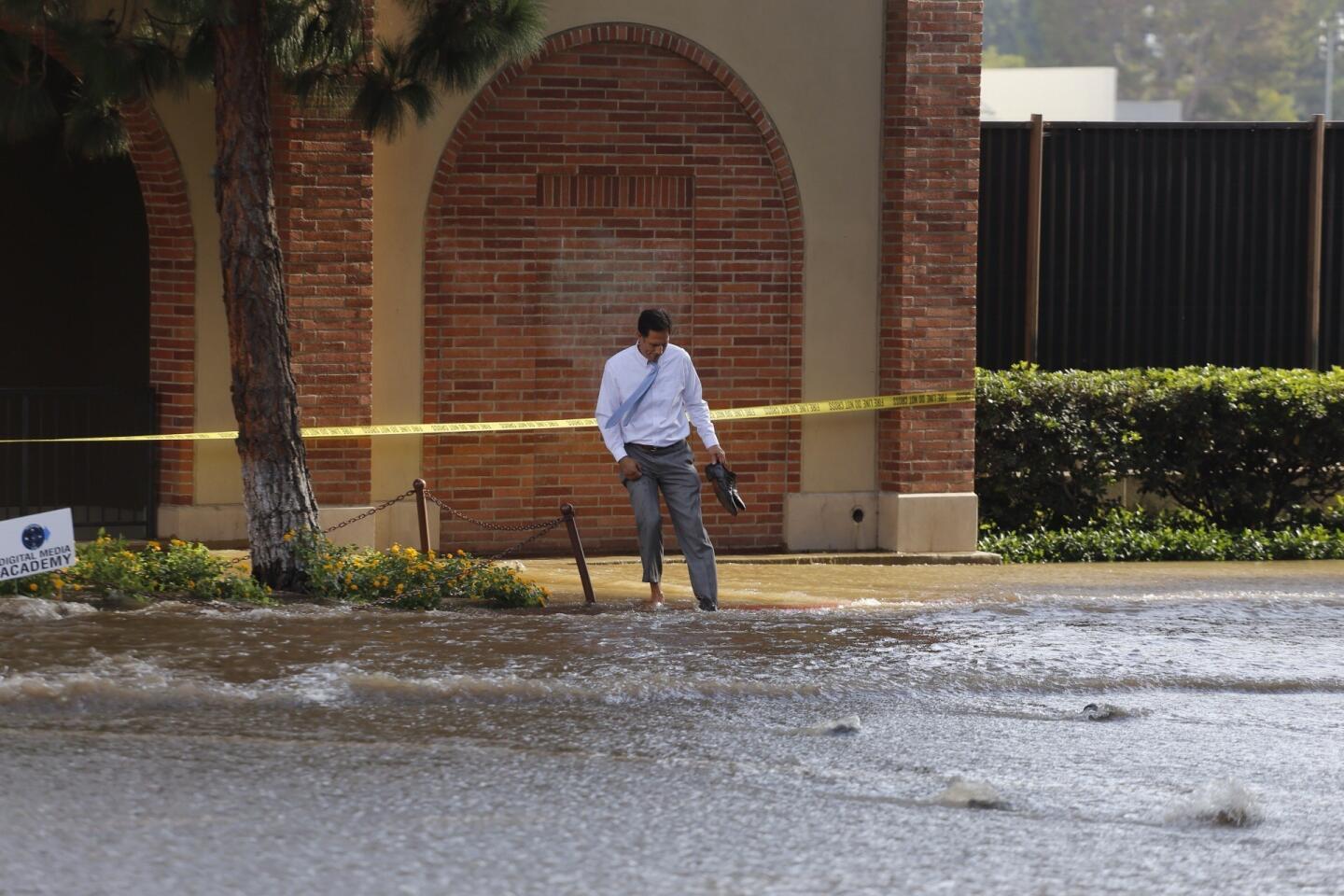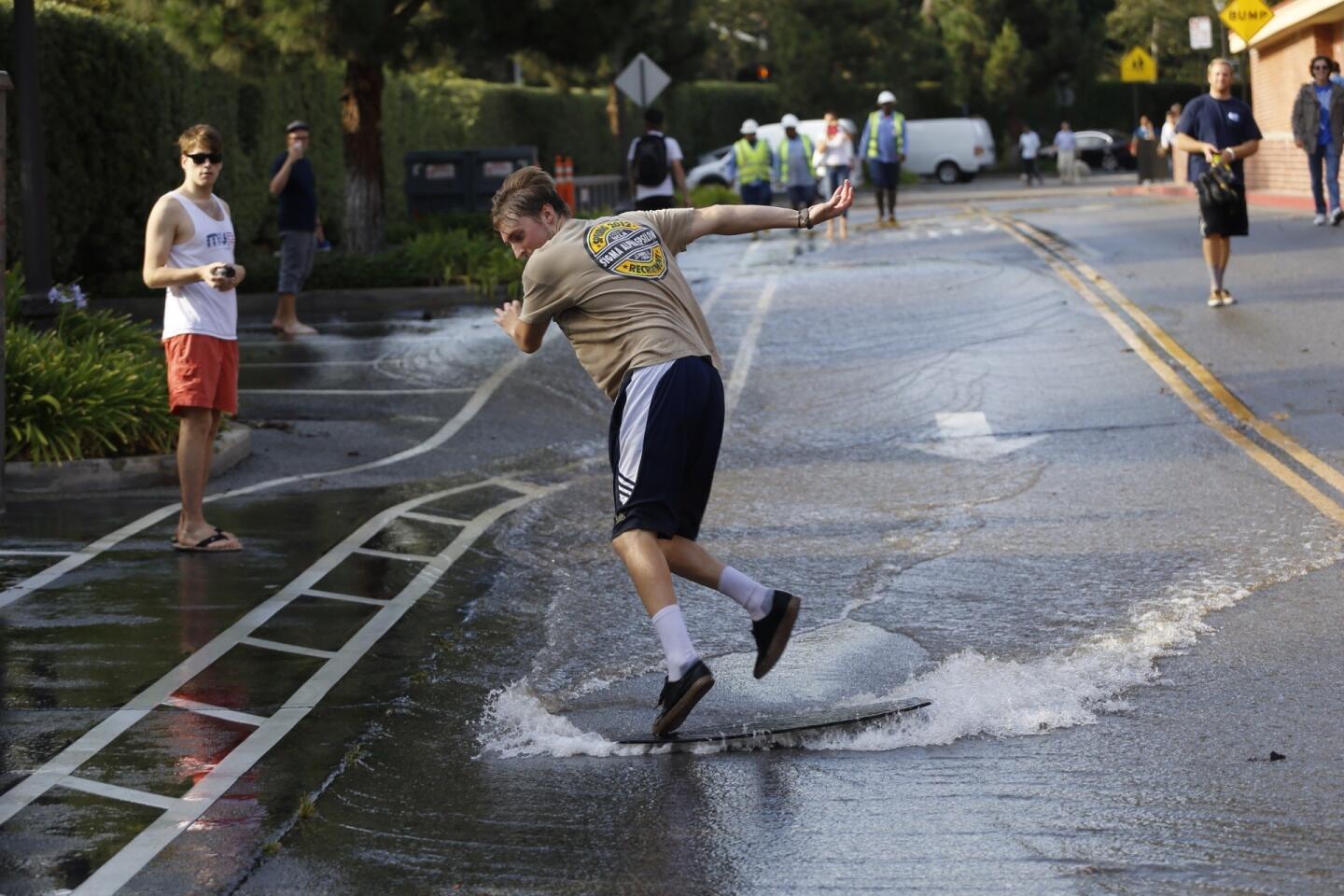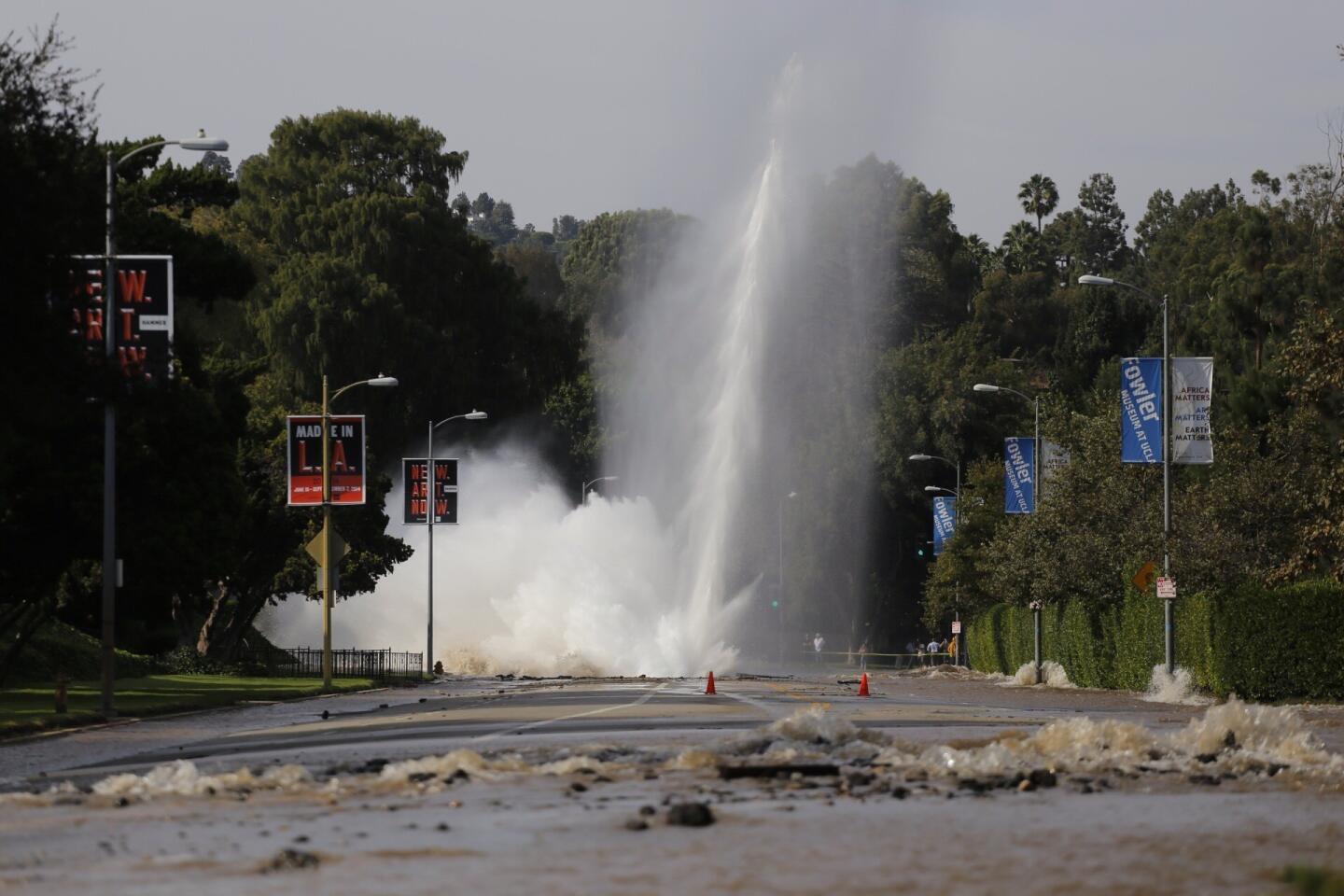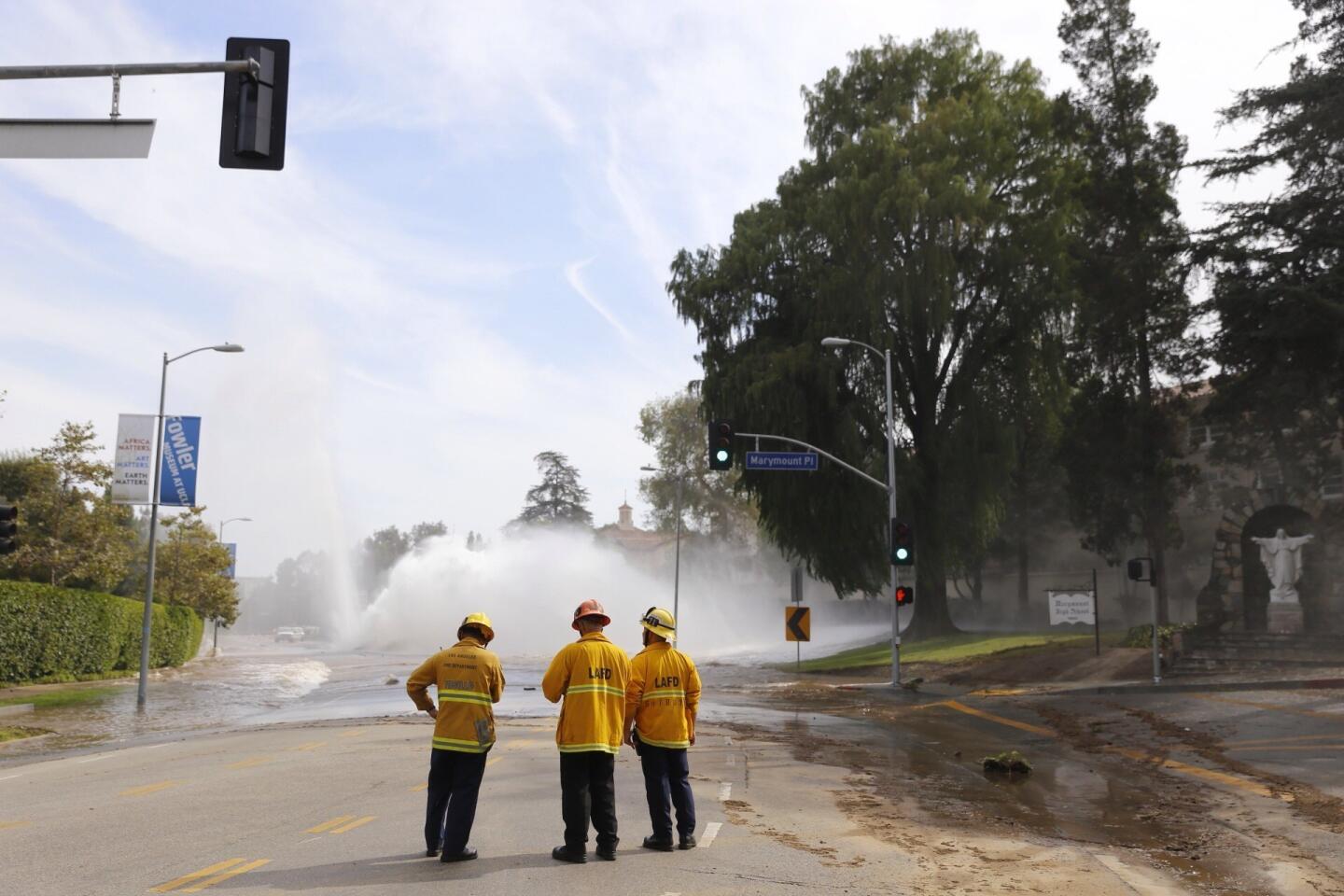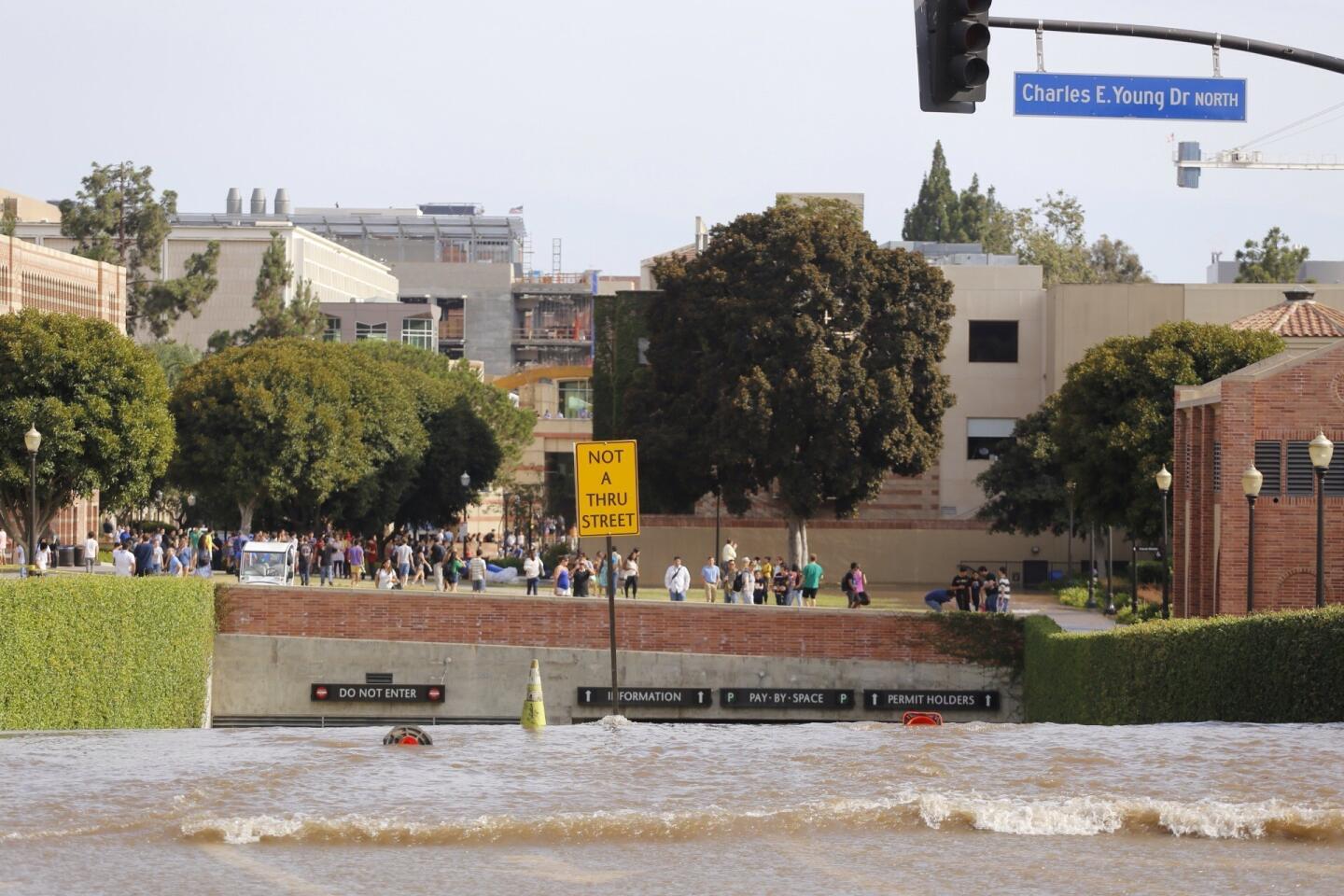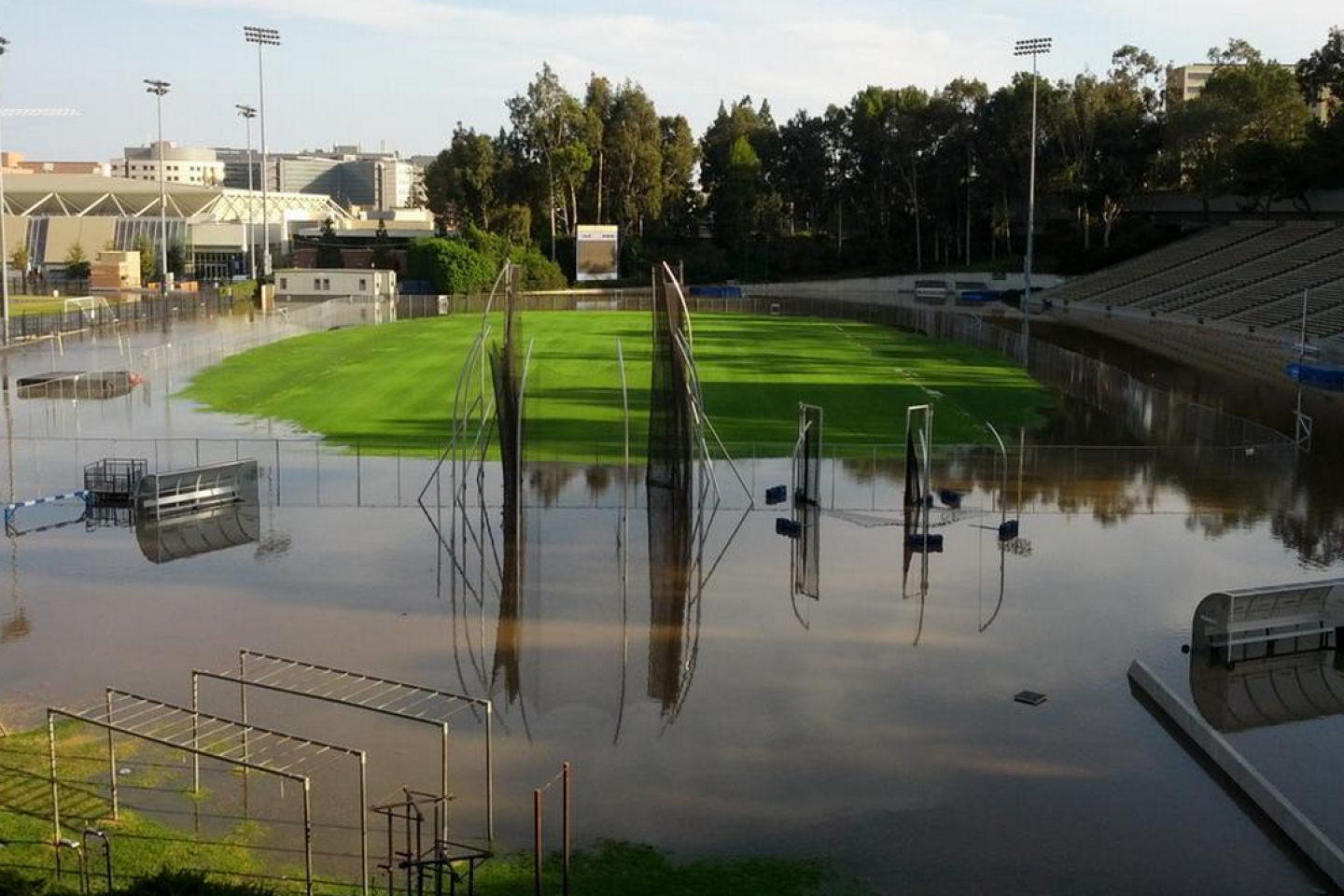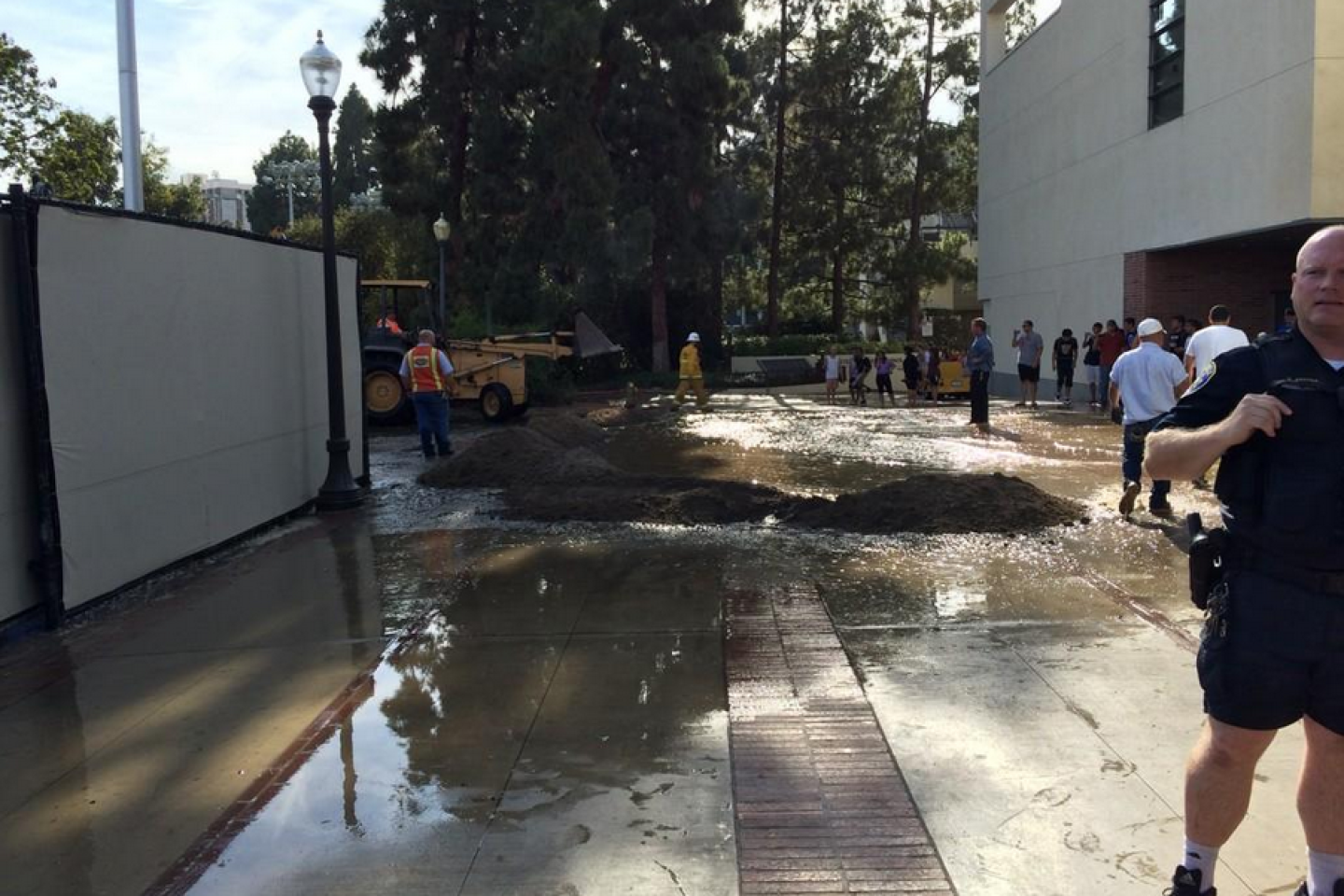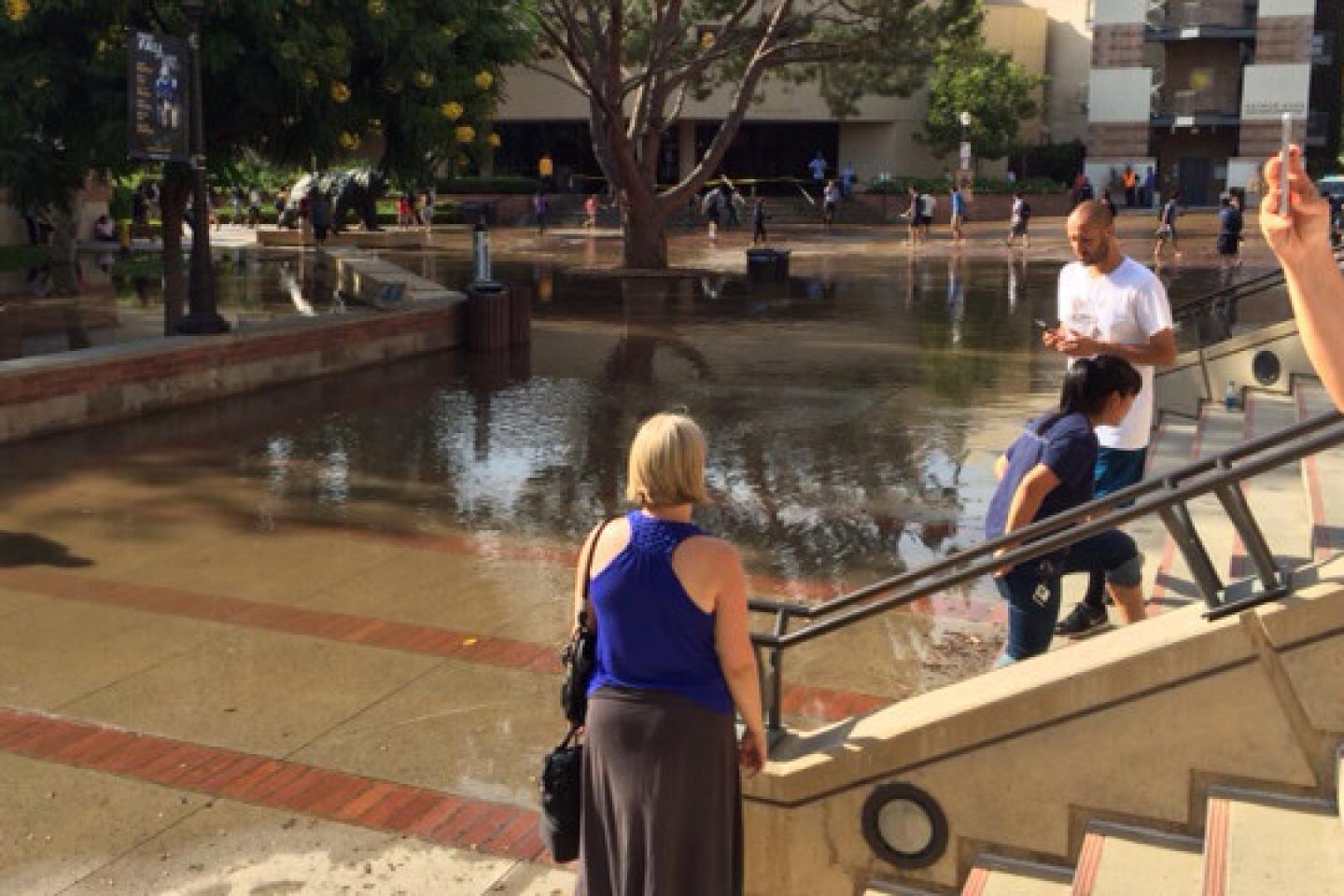Editorial: With UCLA flood, L.A. pays the price for a geyser of neglect
If Los Angeles leaders needed any reminders about the city’s aging infrastructure and the ever-increasing backlog of maintenance, they got it Tuesday in the form of a 30-foot geyser spouting from Sunset Boulevard. The rupture of a 90-year-old water main sent more than 20 million gallons into the streets and onto the UCLA campus, flooding the recently renovated Pauley Pavilion. To add insult to injury, it spilled enough water to serve 155,000 people for a day — just as statewide restrictions on water waste took effect.
About a quarter of the city’s water pipes are more than a century old and at increasing risk of failure, yet the Department of Water and Power’s pipeline replacement rate is 315 years. In the wake of the Westwood break, several City Council members have called on the utility to fast-track pipe replacements and improve the reliability of the water system.
We’ve heard this before. After an accident, the DWP launches an aggressive schedule to repair and replace old infrastructure, then city or utility leaders balk when it’s time to raise rates to continue the repairs. Indeed, the utility has already adopted a financial plan that called for investing $2 billion over 10 years to upgrade aging pipes. But the utility dropped plans for a rate hike in 2012, and a recent report shows that it has scaled back its water infrastructure goals. If L.A. wants to fix its old pipes faster than every 300 years, then the City Council and Mayor Eric Garcetti need to make a long-term commitment to funding the work and providing oversight to ensure that the money is spent efficiently. And customers will need to pay more for their water.
Higher water bills are a hard sell. Water rates have already risen 45% in the last two years simply because of the drought and the higher cost of imported water. Plus, ratepayers are being charged a special fee to repay the billions of dollars spent to cover open reservoirs and build the second-largest ultraviolet water treatment plant in the nation, all of which are required in order to meet state and federal environmental rules. But there’s a cost to inaction as well. DWP ratepayers could be on the hook for tens of millions of dollars in damages from the water main break near UCLA.
L.A. is rapidly showing its age. Potholed streets, busted sidewalks, deteriorated power poles and leaking pipes are all symptoms of a city that can’t afford or hasn’t prioritized basic maintenance. Sometimes it takes a crisis — or a geyser — to focus city leaders and residents on the need to invest in infrastructure.
Follow the Opinion section on Twitter @latimesopinion
More to Read
A cure for the common opinion
Get thought-provoking perspectives with our weekly newsletter.
You may occasionally receive promotional content from the Los Angeles Times.
